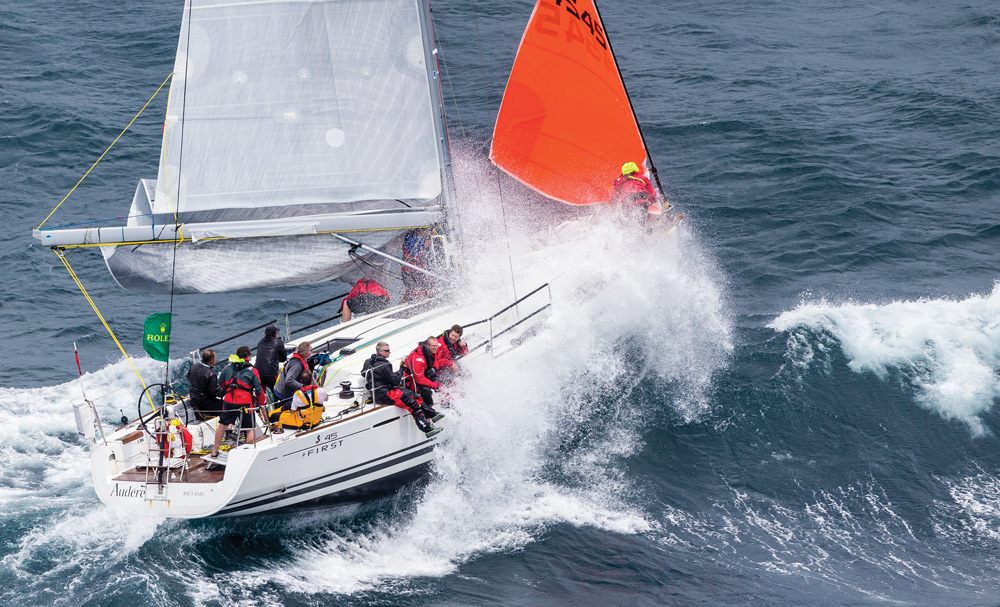6 things every sailor should know how to do
Don’t head out to sea without knowing what to do when emergencies—both small and large—arise
6 Dealing with heavy weather

Sometimes, no matter how much you plan, heavy weather interrupts an otherwise nice offshore passage. And if you can’t avoid it or outrun it, you’ll have to deal with it. There are three strategies to use in a storm: heaving-to, forereaching and lying ahull. Which method you use depends on the specific circumstances.
Heaving-to works best for full-keel, heavier boats, although it can be done on some modern boats. When heaving-to, backwind the jib and lash the rudder hard over to drive the boat hard into the wind to balance the boat but allow it to make no headway. The boat will have some heel, but will slowly drift downwind. Ideally the boat will lie off the wind about 45 degrees, and you’ll need to trim the mainsail and the rudder to find a comfortable position. You can practice heaving-to in moderate conditions, so there’s no need to wait for a gale to try it out.
Forereaching works on a wider variety of boats, and involves reefing dramatically and jogging off the wind at 45 to 60 degrees, making slow speeds. The advantage of forereaching is that you have directional control and can make some headway, which is especially important if you are working off a lee shore. It’s also comforting to be an active participant in dealing with the situation, rather than waiting for the weather to abate. The key to successful forereaching is to aggressively shorten sail—a deep reef in the main and a storm jib at a minimum, but a trysail can work as well. Pick a heading that is about 45 to 60 degrees off the wind and continually trim the sails. Forereaching is not for wimps. The boat and its crew will take a beating, so a sturdy offshore boat is best suited to this method.
Lying ahull is the least attractive option, and only to be used in survival situations. You simply take all the sails down, lash everything down, go below and prepare for a very uncomfortable ride. In large seas, many boats will lie abeam, leaving the boat vulnerable to a capsize. This is truly a last-ditch option.

Comments